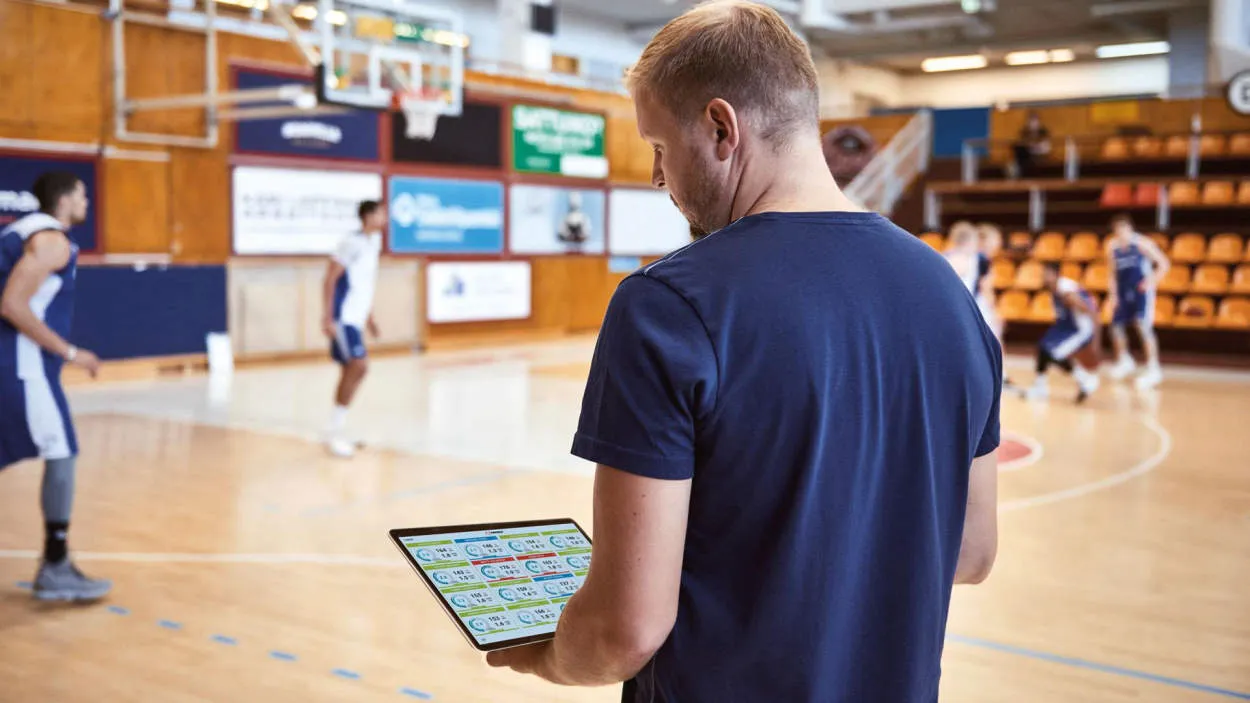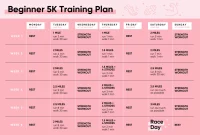Sports Training Insights: Advanced Methods for Success
Discover the latest techniques and strategies in sports training that can take your performance to the next level. In this article, we delve into advanced methods used by top athletes and coaches to achieve extraordinary results. From cutting-edge technology to innovative training regimens, explore how these techniques can propel you towards success in your chosen sport.
Leveraging Data Analytics in Training
In the realm of sports training, data analytics has emerged as a powerful tool for achieving optimal performance and success. By leveraging data analytics in training, athletes and coaches can gain valuable insights into their strengths, weaknesses, and areas for improvement.
Data analytics allows for the collection and analysis of vast amounts of data, ranging from performance statistics to biometric measurements. This data can be used to identify patterns, trends, and correlations that may not be apparent through traditional observation alone.
One of the key advantages of data analytics in training is the ability to personalize and tailor training programs to individual athletes. By analyzing an athlete’s data, coaches can identify specific areas that need improvement and develop targeted training strategies to address those areas effectively.
Data analytics also plays a crucial role in injury prevention. By monitoring an athlete’s workload, training volume, and recovery metrics, coaches and trainers can identify potential risks and adjust training plans accordingly. This proactive approach can help minimize the occurrence of injuries and optimize an athlete’s performance.
Furthermore, data analytics can be used to track and measure progress over time. By regularly collecting and analyzing data, athletes and coaches can assess the effectiveness of training strategies and make informed decisions on adjustments or modifications.
Ultimately, leveraging data analytics in sports training can provide a competitive edge. By harnessing the power of data, athletes and coaches can gain a deeper understanding of performance factors, make data-driven decisions, and optimize training efforts to achieve greater success.
Sport-Specific Drills for Skill Enhancement
In sports training, skill enhancement is crucial for athletes looking to excel in their respective disciplines. To maximize success, athletes need to focus on sport-specific drills that target their key skills. Here are some advanced methods to enhance skills in various sports:
1. Basketball
– Shooting: Incorporate high-intensity shooting drills that simulate game-like scenarios, such as shooting off screens or from different spots on the court.
– Ball Handling: Practice dribbling exercises that challenge speed, control, and agility, including dribbling through obstacles or executing crossovers.
– Defense: Enhance defensive abilities through drills like closeouts, one-on-one matchups, and defensive slides.
2. Soccer
– Passing: Focus on precision and accuracy by executing various passing drills, such as short passes, long passes, and through balls.
– Dribbling: Improve ball control under pressure with drills involving cone setups, dribbling through small spaces, and practicing different moves (e.g., step-overs, feints).
– Shooting: Develop shooting techniques from different angles and distances using both feet, incorporating volleys, lobs, and long-range shots.
3. Tennis
– Serve: Enhance serve power and accuracy through repetition drills, targeting different spots on the court and incorporating variations like slice and kick serves.
– Groundstrokes: Practice forehand and backhand strokes with drills that emphasize consistency, footwork, and shot placement.
– Net Play: Improve volleys and overheads by engaging in drills that simulate net game scenarios and require quick reflexes and precise shot execution.
4. Swimming
– Starts: Focus on explosive starts with diving drills off starting blocks, practicing streamlined entry into the water and maximizing initial momentum.
– Turns: Improve turn efficiency by working on flip turns and open turns, emphasizing speed, body position, and timing.
– Stroke Technique: Enhance stroke efficiency through drills that focus on arm positioning, breathing techniques, and body rotation.
Remember, these sport-specific drills are just a starting point. Tailor them to your specific goals and sport requirements, and always seek guidance from professional coaches to ensure proper technique and injury prevention.
The Impact of Cross-Disciplinary Training
In the world of sports training, athletes are constantly searching for advanced methods to enhance their performance and achieve greater success. One such method that has gained significant attention is cross-disciplinary training. This training approach involves incorporating elements from multiple sports or disciplines into an athlete’s training regimen.
The impact of cross-disciplinary training on athletes is undeniable. By participating in activities outside of their primary sport, athletes are exposed to new challenges and stimuli that can improve their overall athleticism and performance. This type of training not only helps break the monotony of traditional training methods but also provides a fresh perspective on movement patterns, coordination, and skill development.
Furthermore, cross-disciplinary training promotes the development of transferable skills. Athletes who engage in activities outside of their primary sport often acquire new skills that can be applied in their respective field. For example, a basketball player who incorporates boxing training into their regimen may enhance their agility, footwork, and hand-eye coordination, which can directly translate to improvements on the basketball court.
Another benefit of cross-disciplinary training is the reduction of injury risk. By engaging in varied exercises, athletes can strengthen different muscle groups and prevent muscle imbalances. This diversified approach also helps in minimizing overuse injuries that may occur from repetitive movements associated with a single sport.
Furthermore, cross-disciplinary training fosters a well-rounded athlete. It encourages individuals to step out of their comfort zones, develop new interests, and broaden their horizons. This not only leads to physical benefits but also contributes to mental and emotional growth. Athletes who engage in diverse training experiences often exhibit higher levels of creativity, adaptability, and resilience.
In conclusion, the impact of cross-disciplinary training in sports is immense. Athletes who incorporate elements from various disciplines into their training not only enhance their performance but also acquire transferable skills, reduce the risk of injuries, and foster personal growth. As the sports industry continues to evolve, cross-disciplinary training will undoubtedly play a crucial role in shaping the future of athletic success.
The Role of Virtual Reality in Sports Preparation
Virtual reality (VR) technology has revolutionized various industries, and the world of sports is no exception. In recent years, VR has emerged as an advanced method for athletes to enhance their training and preparation. This article explores the significance of virtual reality in sports preparation and how it can contribute to athletes’ success.
One of the key advantages of VR in sports training is its ability to simulate real-game scenarios. Athletes can immerse themselves in a virtual environment that replicates the conditions they would experience during actual competitions. Whether it’s practicing in a virtual stadium or facing virtual opponents, VR allows athletes to familiarize themselves with various game situations, improving their decision-making skills and reactions.
Furthermore, VR enhances athletes’ mental preparation by providing an immersive and realistic training experience. Athletes can visualize themselves performing at their best in high-pressure situations, helping them build confidence and mental resilience. By training in a virtual environment, athletes can also reduce anxiety and stress associated with competing, making them better equipped to handle game-day pressures.
In addition to mental preparation, VR can significantly aid in physical training. Athletes can use VR technology to analyze and improve their technique, form, and movement. VR allows them to observe their performances from different angles, enabling them to identify weaknesses and make necessary adjustments. This level of detailed analysis can lead to enhanced performance and reduced risk of injuries.
Moreover, VR is not limited to individual training. It can facilitate team preparation by promoting better communication and synchronization among players. With VR technology, teams can virtually practice together, regardless of their physical locations. This ensures that players are well-coordinated, familiar with each other’s playing styles, and can develop effective strategies as a cohesive unit.
As technology continues to advance, the role of VR in sports preparation is expected to expand even further. With the potential for realistic simulations and tailored training programs, athletes can take their preparation to new heights. However, it’s important to note that while VR is a valuable tool, it should complement traditional training methods rather than replace them entirely.
Strategies for Long-Term Athletic Development
Achieving long-term success in any athletic endeavor requires careful planning and a strategic approach to training. Here are some key strategies that can help athletes maximize their potential and maintain peak performance over the long term:
1. Progressive Training
Adopting a progressive training program is crucial for long-term athletic development. Gradually increasing the intensity, duration, and complexity of workouts allows athletes to build endurance, strength, and skill without risking burnout or injury.
2. Periodization
Periodization involves dividing a training program into different phases to target specific goals and prevent stagnation. By incorporating periods of high-intensity training, active recovery, and skill refinement, athletes can continuously improve their performance while reducing the risk of overtraining.
3. Cross-Training
Engaging in a variety of sports and activities can enhance overall athleticism and reduce the risk of overuse injuries. Cross-training helps develop different muscle groups, improves coordination, and provides mental stimulation, resulting in a well-rounded athlete.
4. Proper Nutrition
A balanced diet that provides adequate energy and nutrients is essential for optimal athletic development. Athletes should focus on consuming nutrient-dense foods, staying properly hydrated, and timing their meals to support training and recovery.
5. Rest and Recovery
Allowing sufficient time for rest and recovery is crucial for avoiding overtraining and maximizing long-term performance. Sleep, active recovery, and rest days should be integrated into the training program to promote muscle repair, reduce fatigue, and prevent burnout.
6. Mental Conditioning
A strong mental game is as important as physical conditioning for long-term athletic success. Developing mental toughness, visualizing success, setting goals, and managing stress can greatly enhance an athlete’s performance and ability to overcome challenges.
7. Injury Prevention
Implementing injury prevention strategies, such as proper warm-up routines, maintaining good technique, and listening to the body’s signals, is crucial for long-term athletic development. Regular screenings, strength and mobility exercises, and seeking professional guidance can help identify potential weaknesses and mitigate the risk of injuries.
8. Supportive Environment
A positive and supportive environment is essential for an athlete’s long-term development. Surrounding oneself with coaches, teammates, and mentors who provide guidance, motivation, and support can greatly enhance an athlete’s journey and foster a growth mindset.
Conclusion
In conclusion, advanced methods for sports training are essential for athletes to achieve success. By incorporating innovative techniques such as high-intensity interval training, sports-specific drills, and technology-driven analysis, athletes can enhance their performance and reach their full potential. It is crucial for coaches and trainers to stay updated with the latest training methods to keep athletes ahead of the competition.




